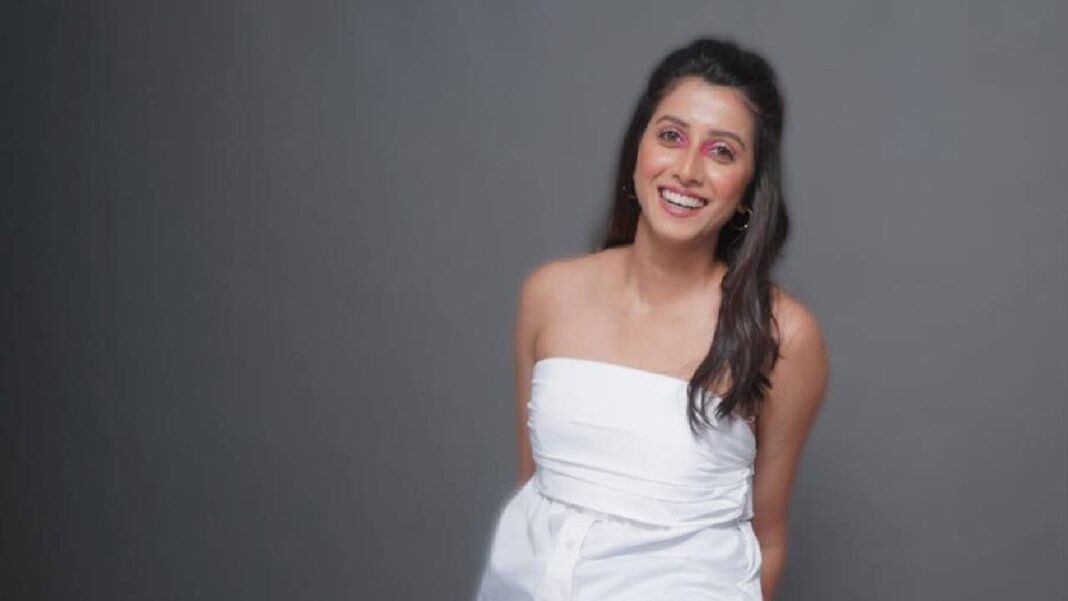In a candid chat with The Pioneer, actress Palak Jaiswal opens up about her intense role in Sony LIV’s Black, White and Grey, which has been receiving widespread acclaim. From diving deep into her character’s silent complexity to managing the psychological impact of emotionally charged scenes, she reveals the process behind her powerful performance — and the overwhelming response from viewers who are still wondering about her character’s fate
Tejal Sinha
tejal.sinha30@gmail.com
With Sony LIV’s psychological drama Black, White and Grey garnering a strong response from viewers, actress Palak Jaiswal finds herself in the spotlight for her intense, layered performance. The series, known for its intriguing title and gripping narrative, has sparked numerous conversations — and even more questions — about her character’s fate. In a candid conversation with The Pioneer, she shares what drew her to the story, the emotional intricacies of her role, and how she navigated the intensity of her performance. Palak recalls how she landed the project through an audition process. “I first received the character description, then the director’s name. The director had done this movie called Welcome Home, which completely blew my mind after I watched it. Then when I read the character brief, it was so, so interesting and very layered.”
She was immediately fascinated by the personality she was set to portray — a young woman from a high-profile political family who communicates more through expressions than words. “My character was someone who speaks through her eyes. She is very grounded but also comes from a politician family — basically, the whole character drew me to it. Later, when I read the script, it was so gripping that the reactions we are getting from audiences now were the exact thoughts I had back then. I had the same question for my director as the audience is asking me now.” She laughs, adding, “People have DMed me on Instagram saying they loved my acting and have been questioning me — what has happened to the girl? Is she alive or not? You might know about it!”
Delving deeper into her role, Palak highlights how her character is central to the theme of the show. “The whole crux of the story is about the girl. The story begins with a girl who comes from a rich family, her father is a big politician. But when the boy and the girl come into the central part of the story, you realise the boy is the son of the family’s driver — and he can’t let his identity come out.”
This dynamic serves as a mirror to real-world social disparities. “Everything becomes a way of context that currently also happens — that until and unless a big person’s name is involved, the case is not highlighted. People from different strata can come and get lost in the system unless something big happens.”
She further elaborates, “Here, both characters come from different classes. The girl’s father is trying to hide everything because of his position, and the boy’s father is a driver who is also trying to protect his son. That class contrast was deeply woven into the narrative.”
Despite her character’s limited dialogue, the emotional weight of the role was enormous — something that became a personal challenge for Palak. “The biggest challenge for me was that on-script, there was not much written about the girl. Even on-screen, her challenges are limited. But it’s her silence that speaks more,” she explains.
To bring authenticity to the role, Palak built a backstory for her character. “It was very important for me to find what she’s thinking during her silence — because that’s not a simple challenge. She comes from a really complex background, she doesn’t talk much to her parents, and I had to create that world for myself.”
As part of her process, Palak embraced her inner sleuth. “I played a detective in that and enjoyed it because I’m an actor and I love to work on my characters — finding the layers, the personality traits. Funnily, I even try to find the zodiac sign of my character!” she says with a smile. “I study everything about the character.”
Playing such a psychologically intense character also took a toll on her emotionally. Palak recalls one particular scene that stayed with her long after the cameras stopped rolling. “There’s this scene where I am killing the police officer. That, for me, was very intense because there’s a stone in my hand and I’m just hitting,” she says. “It is very physically bruising too, but more than that, when you realise that this girl — even without giving a thought — is doing it all, it’s chilling.”
Palak emphasises that the character isn’t inherently bad. “She’s not a bad person, but something has made her reach that point. When I get involved in something that is very emotionally draining, you of course cannot forget your sense of reality. But to come out of that character and remind myself that I am Palak, I generally begin to notice people around me. I try to awaken all of my senses.”




